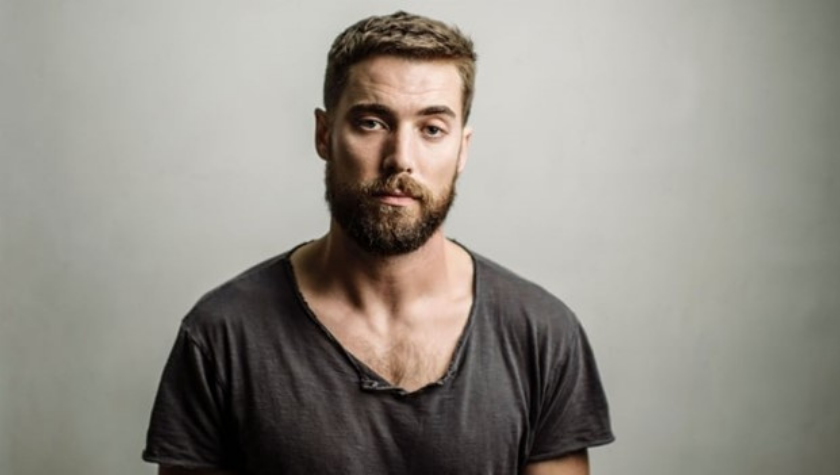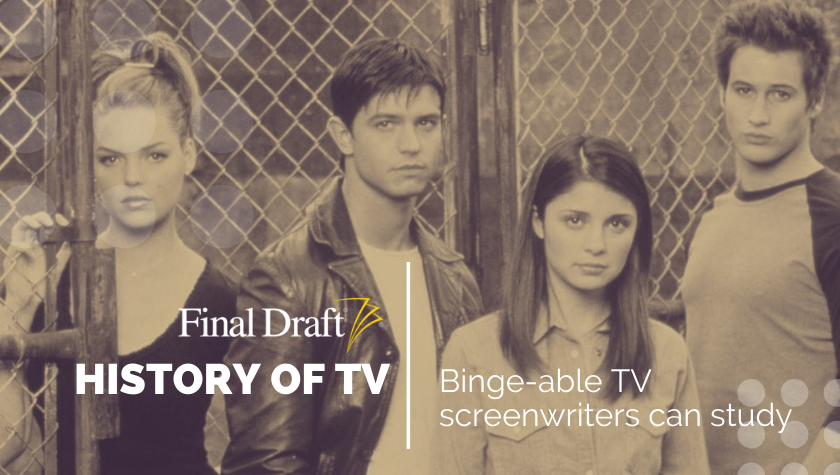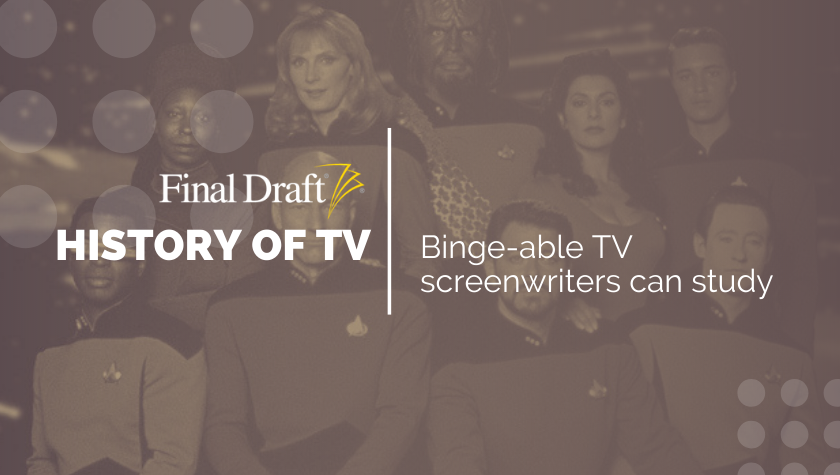History of TV: To Boldly Live on 'Deep Space Nine'
February 4, 2021
When Commander Benjamin Sisko commenced the Deep Space Nine station log on stardate 46388.2, we were introduced to one of the grittiest entries in the Star Trek canon. Star Trek: The Next Generation was ending, and it was welcoming its successor in the tone we’d come to associate with DS9: in the heat of battle.
We meet Sisko (played by the stoic and nuanced Avery Brooks) not on DS9, but on the U.S.S. Saratoga and under attack from the vicious Borg, currently lead by the kidnapped — and beloved — Captain Jean-Luc Picard (Sir Patrick Stewart). Sisko’s wife is killed and he, his son Jake, and other survivors barely manage an escape before the ship is destroyed. The hatred in Brooks' eyes is chilling, the explosion disintegrating his wife’s dead body reflected on the window he’s watching through.
Still with me? Because that’s all before the theme song kicks in.
Immediately we know that the new guy isn’t going to revere Picard like the rest of Starfleet, setting up a beautifully nuanced meeting between the two later in the episode where so much is left unsaid, I was literally screaming at the screen. It’s a power play, something that DS9 explores again and again in the political and religious arenas. Coupled with an incredible cast that delivered on giving the sci-fi show an emotional gravitas, DS9 is rich with screenwriting takeaways.
Plotting genre
The inhabitants of Deep Space Nine provided a varied take on one’s moral compass — which was relentlessly tried to its tipping point as the show’s main story engine proved to be the politics of war (and the threat thereof).
In the pilot, Sisko is tasked with taking command of Deep Space Nine, just off the planet Bajor, by request of the Bajoran government to have Starfleet presence after their own freedom fighters put an end to the brutal Cardassian occupation. Right from the get-go we’re faced with the aftermath of war; a people recovering and split in their ideals, as well as the underlying issues of colonialism. It’s a lot for a show that evolved from the same world as Shatner and 'The Trouble with Tribbles' (which DS9 does actually revisit in a throwback episode) and yet it feels so right for sci-fi to explore these themes in this way.
On a technical level, the plotlines of individual episodes are so clearly mapped out with the B story paralleling the A story that I’m surprised (and a little disappointed) in my 10-year-old self for not seeing it earlier. The pilot especially is a blueprint for "how to write a sci-fi show that sells." Even character revelations are so intrinsically linked to plot and genre that it becomes seamless and the epitome of “show don’t tell.” As with the introduction of Lieutenant Commander Jadzia Dax. Through conversation with Sisko, we learn she’s about 300 years older than she looks with a “slug” in her stomach, but only through contact with a key aspect of the plot (a Bajoran Orb that we’ve already seen show another character their own past) do we see the ceremony in which she came to play host to that slug. Yes, I’m in awe of Star Trek writers.
Talking about the tough stuff
In an interview last year, Armin Shimerman (who played DS9’s lovable bartender Quark) stated it best when he said, “Our program wasn’t about boldly going anywhere; it was about boldly living with each other.”
The show featured some of Star Trek’s most unique and layered characters in my opinion. But what it did best was put a black man in the captain’s seat — a first for the franchise at the time — and deal with racism not under the guise of alien races, but the “others” living right next door. Sisko was black; a commanding officer, a widow, a devoted father, and a religious icon to the show’s fictional Bajoran people. He was multidimensional and a pioneer both onscreen and through the character itself.
The show also dealt with terrorism, imperialism and even (ironically?) democracy during a crisis. Unlike its predecessors in the world of Starfleet and the final frontier, DS9 didn’t do so mainly through an allegorical lens. Season three’s 'Past Tense' is set in a very bleak 2024 San Francisco, where homelessness and poverty are at the forefront and racism isn’t dead. Season six’s 'Far Beyond the Stars' is also directed by Brooks, in which his character Sisko believes himself to be a sci-fi writer in the ‘50s… and all of the racism, police brutality, and reality of being black in America that goes with that. In the world of DS9 these atrocities have all but disappeared and thus offers the eternal note of hope Star Trek gives in all its incarnations.
Identity crisis
When I first watched the show more than two decades ago, I thought it would be so cool to live on that space station, stroll the promenade… or maybe it was just that teenage me wanted to be Bajoran Kira (the fierce Nana Visitor). We first meet her in the midst of an argument. But it’s one about something she believes in deeply. Everything Major Kira did was with purpose, heart and an inspiring boldness and passion. Once freedom fighter (terrorist?) for her people, she now serves them politically on DS9.
Then there was Odo (René Auberjonois). A “Changeling” in the vein of Spock and Data, he could turn into anything… except a solid human form. His continuous search for identity was often both heartbreaking, and in a way, relatable for a teen growing into their own. There were so many good characters I could probably squeeze a part II out of this post, but that’s the lovely thing about DS9; there was someone for everyone on that station, all on their own quest yet part of this one quirky community with a common mission. Yup, there’s that allegory thing sci-fi’s so good at, again.
In retrospect
Creator Rick Berman told Star Trek Magazine in 2006 about the Star Trek franchise: “We created 624 hours of television and four feature films and I think we did a hell of a job. I'm amazed that we managed to get 18 years of the kind of work that everyone involved managed to contribute to, and it's certainly more than anyone could have asked for."
While STNG had stood for inclusivity, compassion and understanding, DS9 did all those things but with more realism. For seven seasons, it entertained, educated and took us to the far reaches of the galaxy in a most emotional way. That’s every writer’s dream: create something with resonance and it’ll never go out of style.
Stream all seven seasons of Deep Space Nine on Hulu.
Written by: Karin Maxey
After seeing her first big screen movie 007: License to Kill at age six, Karin naturally became obsessed with writing action-infused stories. The next time she’d see Benicio del Toro was in person, at the 68th Cannes Film Festival—he was there for the Sicario red carpet, she was there for her first produced short film in the basement of the Palais…same-same. In between, Karin earned a Creative Writing Degree and landed management at Echo Lake Entertainment. Her scripts have been a Big Break Top 3 finalist, HollyShorts Film Fest Official Selection, and a multi-Screencraft competitions semi-finalist. Karin is also a screenplay editor who delights in the process of polishing writers' work for submission. You can find her at www.writergirlkarin.com.- Topics:
- Discussing TV & Film




